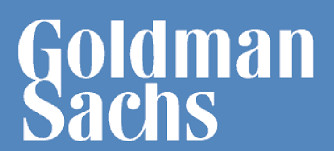
In recent years Goldman's status slipped in electronic trading because its technology did not keep up with client demands for ever-faster trades despite the bank being one of the top two stock brokerages in terms of revenue and customer rankings.
It was to fix this problem that the bank had hired Raj Mahajan to mend the technology that Goldman uses to route stock orders to exchanges and private trading pools.
Since the tech-savvy Mahajan was was hired by Goldman to revamp the business in March 2015, dozens of technologists and support staff have been included in the team to elevate Goldman's position in a fast-growing slice of the market and win back business from its chief competitor, Morgan Stanley.
"When we look at how Goldman wants to be positioned for the future, simply put, we want to deliver the best execution quality to our clients, which is tantamount to saying we need the best technology," Mahajan said in an interview.
Last month 43-year-old Mahajan was made the co-head of global execution services of the bank. Mahajan had left the bank in 2000 to launch a trading technology firm with R. Martin Chavez after joining Goldman Sachs in 1996 as a commodities analyst. R. Martin Chavez is now Goldman's chief information officer.
Mahajan became president of global trading of the new company that was formed after their startup, Kiodex, was bought in 2004 by financial software maker Sungard. Before rejoining Goldman as partner, a rank held by around 1.5 percent of Goldman employees, he had been the chief executive officer of high-frequency firm Allston Trading.
Inducing more efficiently to find the best liquidity and to make trades move faster were the aims of fixing the cracks in Goldman's pipes, Mahajan said.
"I thought that played right into my skills," he said.
A new system that Goldman had acquired when it bought Stockholm-based Pantor Engineering in October would be available to the bank’s clients within the next few months. Goldman hired several managers in Europe and the United States to tweak and integrate the system into its own and thus retained Pantor's team of about 20 engineers.
Mahajan said that clients of the bank would be able to use the bank's proprietary algorithms within that new system later this year as planned by the bank. Institutional investors who do not have their own algorithms would thus be allowed to tap into quantitative trading strategies.
Goldman, whose electronic stock-trading business appeared to be on shaky ground in the years leading up to his hire, considers the work Mahajan has been doing as important.
Goldman suffered a high-profile technical trading error, which later resulted in a regulatory fine in 2013 after the bank's former head of electronic stock trading, Greg Tusar, announced his departure in February 2013 to join electronic trading firm Getco.
The sale of two businesses, fluctuations in the value of its own debt, and markets that flipped from sluggish to volatile in short periods of time were only but some of the reasons that Goldman's revenue from stock trading became choppy.
But quantitative hedge funds and institutional investors that are increasingly adopting algorithmic trading strategies, which now make up around 10 percent of U.S. stock volume, were missed by the bank due to the technology that it used. One the other hand competitor Morgan Stanley was investing heavily in electronic trading, and experiencing the opposite results.
The bank focused more on other types of business, like derivatives, financing hedge fund trades, and buying big chunks of stock from mutual funds, to keep revenue aloft after Tusar's departure, said sources inside Goldman.
Now however a one-stop shop for clients who want to trade, borrow or hedge stocks is being created by the bank. Goldman and other banks are cutting costs and being very selective about where to put money to work and hence its investment in the electronic business is notable.
(Sorce:www,reuters.com)
It was to fix this problem that the bank had hired Raj Mahajan to mend the technology that Goldman uses to route stock orders to exchanges and private trading pools.
Since the tech-savvy Mahajan was was hired by Goldman to revamp the business in March 2015, dozens of technologists and support staff have been included in the team to elevate Goldman's position in a fast-growing slice of the market and win back business from its chief competitor, Morgan Stanley.
"When we look at how Goldman wants to be positioned for the future, simply put, we want to deliver the best execution quality to our clients, which is tantamount to saying we need the best technology," Mahajan said in an interview.
Last month 43-year-old Mahajan was made the co-head of global execution services of the bank. Mahajan had left the bank in 2000 to launch a trading technology firm with R. Martin Chavez after joining Goldman Sachs in 1996 as a commodities analyst. R. Martin Chavez is now Goldman's chief information officer.
Mahajan became president of global trading of the new company that was formed after their startup, Kiodex, was bought in 2004 by financial software maker Sungard. Before rejoining Goldman as partner, a rank held by around 1.5 percent of Goldman employees, he had been the chief executive officer of high-frequency firm Allston Trading.
Inducing more efficiently to find the best liquidity and to make trades move faster were the aims of fixing the cracks in Goldman's pipes, Mahajan said.
"I thought that played right into my skills," he said.
A new system that Goldman had acquired when it bought Stockholm-based Pantor Engineering in October would be available to the bank’s clients within the next few months. Goldman hired several managers in Europe and the United States to tweak and integrate the system into its own and thus retained Pantor's team of about 20 engineers.
Mahajan said that clients of the bank would be able to use the bank's proprietary algorithms within that new system later this year as planned by the bank. Institutional investors who do not have their own algorithms would thus be allowed to tap into quantitative trading strategies.
Goldman, whose electronic stock-trading business appeared to be on shaky ground in the years leading up to his hire, considers the work Mahajan has been doing as important.
Goldman suffered a high-profile technical trading error, which later resulted in a regulatory fine in 2013 after the bank's former head of electronic stock trading, Greg Tusar, announced his departure in February 2013 to join electronic trading firm Getco.
The sale of two businesses, fluctuations in the value of its own debt, and markets that flipped from sluggish to volatile in short periods of time were only but some of the reasons that Goldman's revenue from stock trading became choppy.
But quantitative hedge funds and institutional investors that are increasingly adopting algorithmic trading strategies, which now make up around 10 percent of U.S. stock volume, were missed by the bank due to the technology that it used. One the other hand competitor Morgan Stanley was investing heavily in electronic trading, and experiencing the opposite results.
The bank focused more on other types of business, like derivatives, financing hedge fund trades, and buying big chunks of stock from mutual funds, to keep revenue aloft after Tusar's departure, said sources inside Goldman.
Now however a one-stop shop for clients who want to trade, borrow or hedge stocks is being created by the bank. Goldman and other banks are cutting costs and being very selective about where to put money to work and hence its investment in the electronic business is notable.
(Sorce:www,reuters.com)





